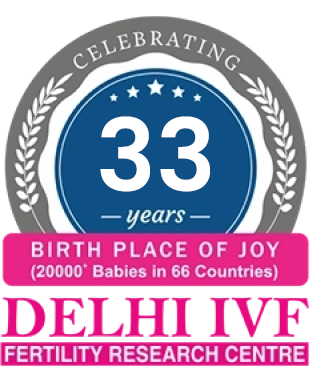For long we have been led to believe that once the eggs in ovaries are exhausted due to any reason then there is no alternative but the egg donation to have babies. The disadvantage is that in egg donation the mother is not the biological mother of the baby. It is for this reason that parents have thinks hard and long before taking a decision. In some religions, it is not even permitted.
But in the light of recent developments in stem cell and PRP research, it seems possible to offer these advanced therapies to menopausal women and females with premature ovarian failure, a chance to have a baby of their own eggs.
Benefits:
Adipose-derived stem cells or PRP or both injected directly into the ovary can stimulate the endogenous stem cells (pericytes) in the damaged area to regenerate ovarian tissue-specific cells to regenerate and rejuvenate the ovary.
PRP injected directly into the ovary releases it cytokines and growth factors to heal and revive the local tissues in the ovaries to produce eggs again. In the case of women with premature ovarian insufficiency and menopause, it gives them opportunity to have a baby with their own eggs.
PRP alone can restore ovarian function:
Human female is born with a fixed number of eggs at the time of birth. From the time puberty, she constantly loses eggs to produce hormones for development of reproductive organs and initiate cyclicity of uterine and ovarian tissues. She constantly loses eggs to produce hormones to mature and release one egg in each cycle. The number of eggs decreases significantly by the age of 35 years and goes down rapidly by the age of forty. When eggs in the ovaries have decreased menopause sets in. In recent years, scientists have been able to stimulate the stem cell to develop into any type of cell with growth factors. PRP injected directly into the ovaries releases growth factors into the ovary; stimulate endogenous stem cells to differentiate into eggs.
This PRP therapy for ovarian regeneration has shown positive results in menopausal women by restoration of the menstrual cycle and conception even after menopause with their own eggs.
The Role of Growth Factors in Rejuvenation
Body cells normally release growth factors for multiplication and differentiation of cells. These factors are important of cell renewal, the growth of tissues like muscle, bone, organs and wound healing. The plasma platelets also release several growth factors to repair injured tissues. PRP has been in use for long in treating sports injuries, in surgery for wound healing. The same property has been used for regeneration off eggs in the ovary and endometrium of the uterus in cases of thin endometrium.
Platelets in the PRP have several growth factors that help ovarian regeneration in cases of premature ovarian failure and menopausal patients.
Following are some of the growth factors:
- Platelet-derived growth factor (PDGF)
- Transforming development factor (TGF), platelet factor interleukin (IL)
- Platelet-derived angiogenesis factor (PDAF)
- Vascular endothelial development factor (VEGF), epidermal growth factor (EGF)
- Insulin-like growth factor IGF and Fibronectin.
Benefits:
Word wide this therapy has been quite successful and helped women with premature ovarian failure, and menopausal women. Normally, these patients have to opt for egg donation, which has the limitation that baby is not the biological child of the mother. With this procedure new wave of egg production starts, normal menstrual cycles are established and the couple can have their own biological child. Several children have been born following this procedure.
The Procedure:
The procedure is quite simple and is done in two steps:

 Your Journey to Parenthood Begins with us!
Your Journey to Parenthood Begins with us!